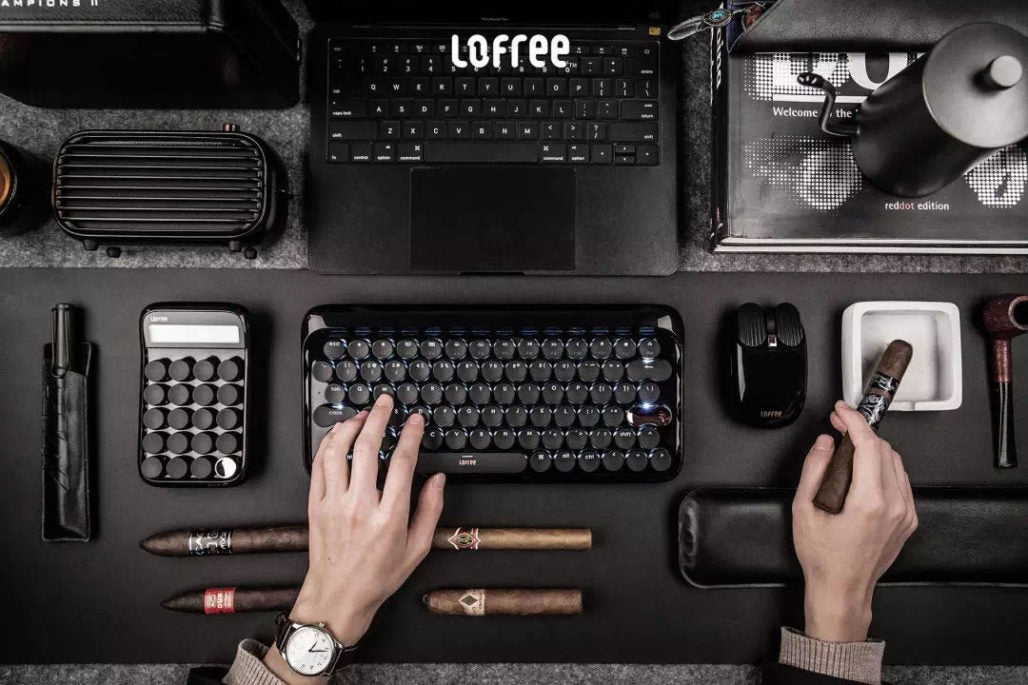Lofree: Creativity in 2m² Can Change the World
"Give me a lever and a place to stand, and I will move the earth." – Archimedes.
Lofree, a stylish lifestyle brand founded by imaginative designers, promotes the idea that "With just 2m², life can become more interesting." This concept embodies their vision of bringing creativity and design into the smallest corners of daily life.

The Meaning of 2m²
2m² – the maximum space one can cover by extending their arms and spinning in place – represents the intimate areas of our daily lives: desks, nightstands, dressing tables, kitchens, bathrooms, bars, coffee tables, or even the folding tray tables on airplanes and in cafés. Lofree believes that 2m² is the closest and most personal territory, the smallest world one can create. Focusing on these 2m² spaces, Lofree designs lively, fun products to add vibrance to dull routines and convey a lifestyle philosophy.
For this tiny space, Lofree introduces a unique definition: “FUN 2m².”

1. A Clear Concept – The Lever of Design
2m² is a simple yet distinctive product concept and brand identity. In today’s competitive and creativity-driven market, Lofree stands out by redefining small lifestyle products like keyboards, speakers, and lamps, drawing consumer attention and offering a fresh perspective on design-driven innovation.
Traditionally, "design-driven" has been interpreted through technical functions or aesthetics. Lofree’s 2m² concept demonstrates that words and ideas themselves can serve as the fulcrum of design. Just as humans rely on language to think, a clear and simple concept can connect design to consumer needs effectively—this is the power of concept marketing.

From a marketing perspective, the core of a product is the benefit it offers. But benefits are intangible, subjective feelings of consumers. Clear concepts communicate these benefits creatively, enabling consumers to understand and identify with them. This drives interest and eventual purchase decisions.
Concepts are the first step in any design process. Without a clear, easy-to-grasp idea, even the best designs fail to connect with customers. As Lofree’s founder and design director TIM (Minghua Chu) noted: “At first, we just wanted to create freely without a clear direction. Consumers wondered what Lofree really stood for. We needed a concept that people could understand instantly. That’s how the idea of the ‘FUN 2m²’ scene was born.”

2. Beautiful and Meaningful Products – The Lever Arm
A concept is just a fulcrum; strong products are the lever that moves the market. For Lofree, the DOT mechanical keyboard was the breakthrough product that opened doors to success.
The Lofree DOT keyboard, with its adorable round keys, draws inspiration from vintage typewriters. The tactile feedback, retro aesthetics, and crisp typing sound transport users back to a romantic era. The popularity of retro products comes from their ability to evoke collective memories and a sense of security in uncertain times—psychologists refer to this as the “anchoring effect.”

Typewriters historically played a vital role in women’s liberation, giving women independence and presence in workplaces. In pop culture, typewriters symbolize both professionalism and romance, particularly for career women. The DOT keyboard inadvertently resonates with this cultural narrative, which has made it especially popular among female users. Data shows that Lofree’s consumer base includes 20% more women than men, mostly from first-tier cities, with Shanghai leading due to its deep appreciation of retro design.
Beyond keyboards, Lofree’s other high-aesthetic products, like the Time Lamp with its candlelight mode and music-responsive flicker, and the “Candy Bean” calculator with playful mechanical switches, continue this systemized design language and charm.

3. From Driven Design to Design-Driven Brand
Lofree’s journey reflects the evolution of many Chinese design companies: from design services, to gift product development, to building their own brand. Co-founders TIM (Minghua Chu) and Paul Yuan moved beyond client-driven projects to create products that express their design philosophy and business vision.
In its early years, Lofree provided design services but realized this approach lacked sustainability. The shift to creating their own products and eventually the Lofree brand allowed them to capture long-term value. Iconic products like the Paper Lamp (winner of the 2015 Red Dot Award) and the DOT keyboard (which raised nearly $5 million on Indiegogo) illustrate how thoughtful design combined with a clear brand message can resonate globally.

TIM emphasizes that a strong brand is the key function (f) in the formula Y = f(X), where Y is design’s driving force, and X is the product design itself. A brand must define its vision clearly, guiding design, marketing, and storytelling to form a cohesive ecosystem.
Lofree’s "love free" name reflects its original ambition to create without boundaries. Ironically, it was the precise and narrow focus on "2m² desktop spaces" that unleashed Lofree’s creative freedom. By embracing well-defined constraints, the brand gained limitless opportunities for expression.

Conclusion
Lofree’s success demonstrates that to move the world of design, you need an accurate fulcrum (a clear concept), a powerful lever (innovative products), and steady execution. For Lofree, this combination has transformed 2m² spaces into inspiring, creative worlds.

